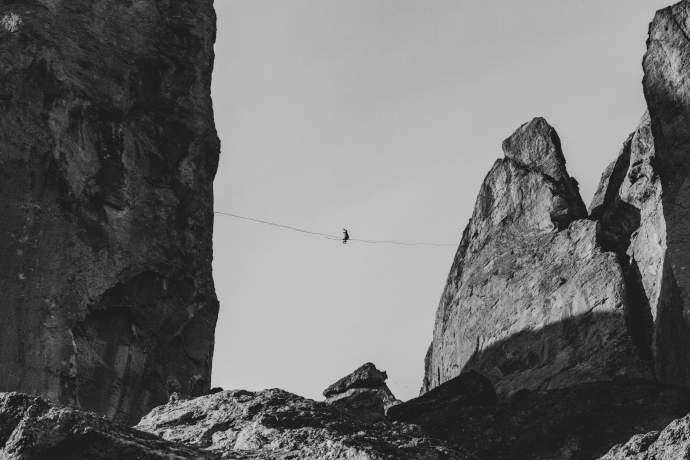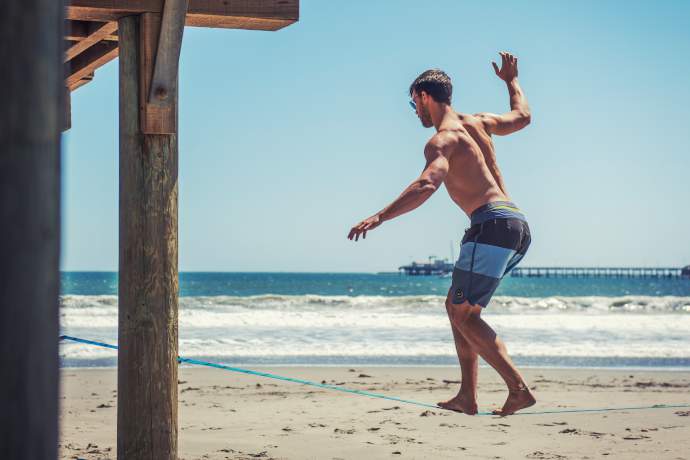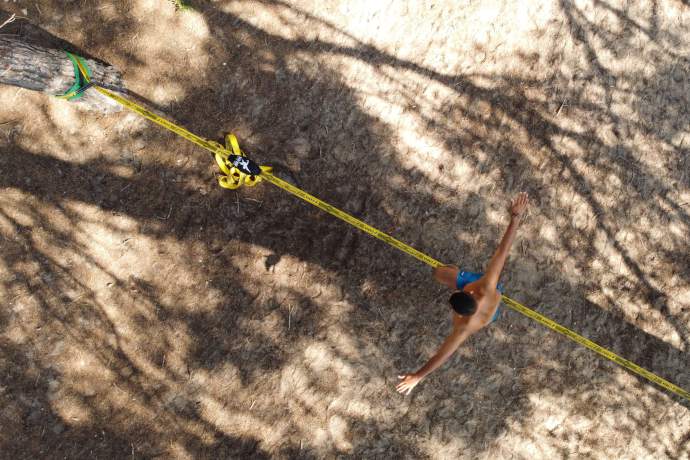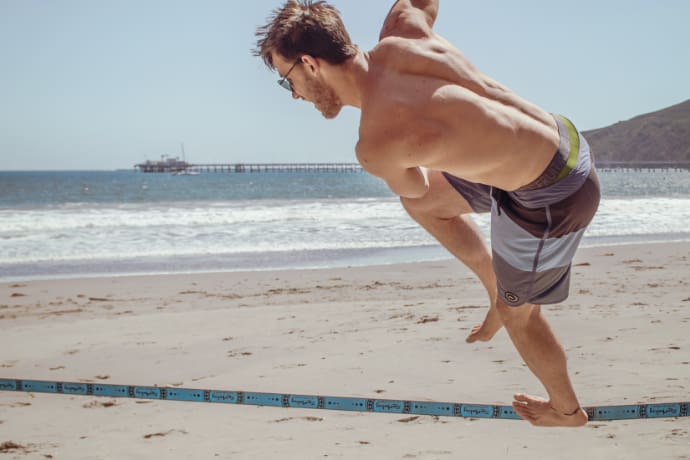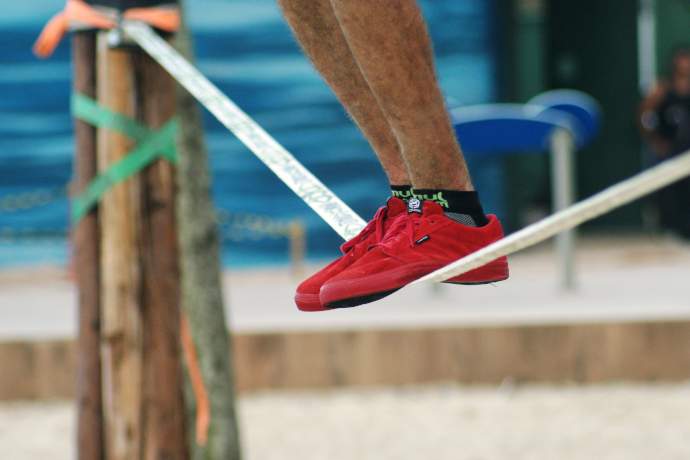You have options, like walking around the neighborhood or chilling on a blanket at the nearby park, but those things can grow stale after a while. Isn’t there anything else that can help you get up and get out? Of course there is! It’s called slacklining. You take a length of strap that’s a few inches wide (or, if you’re daring, narrower), string it up between two trees, and try to walk across it. It sounds simple, but it’s deceptively challenging, addicting, and great for fitness. Here are several reasons why you should try backyard slacklining this summer if you need a fun reason to get outside.
1. Slacklining Has a Great Backstory
Slacklining began in California’s Yosemite Valley in the 1950s. Rock climbers in the valley who wanted an extra challenge would walk across steel chains between fences to test their balance. Later on, these climbers started buying lengths of chain to use at their campsites to help pass the time. These slack chains eventually evolved into straps that were lighter, easier to move, and less expensive. Over time, these rock climbers—with their daredevil nature—started stringing up their lines higher and higher, across longer and longer distances. This gave birth to high-lining, a more serious form of slacklining that’s still popular to this day. If that scares you, don’t worry. Slacklining can be done right in your backyard and you can stay close to the ground so there’s no fear of injury if you can’t stay balanced on the line.
2. Slacklining Is Great Exercise
Walking across a thin strap that bobs up and down is a solid test of your balance, so it shouldn’t come as a surprise that slacklining is great for improving posture. You need to make constant micro-adjustments to maintain your balance on the strap, and that improves your postural control. Most of those micro-adjustments are happening in your core and legs (although your upper body also plays a part in balance). This makes slacklining a great exercise for strengthening your core and legs. Tired of doing squats and crunches all day, every day? Slacklining is a funner way to work those same muscle groups. And as good as slacklining is for your physical health, slacklining is also great for mental acuity. Those constant micro-adjustments demand constant concentration and mental awareness, and studies have shown that slacklining can help improve both memory and learning.
3. Slacklining Is Easy to Get Started
If you can balance on one leg, you can slackline—even if you can’t balance particularly well or for long periods of time. As long as you’re willing to practice and keep trying, you’ll improve. To start slacklining, all you need is an appropriate-strength line that can support your weight while you balance on it. A line that’s at least two inches wide will be kindest for beginners. You don’t need to specifically buy a “slackline,” but there are kits that contain everything you need to get started. (More on that below.) Once your slackline is set up, you’re good to start. Start by putting one leg on the line while keeping your other leg on the ground. Get used to the way the line moves and sways. Then, try stepping up on that leg and balancing. Once you get balancing down, you can incorporate your other leg and try walking across. If you fall off, just hop back on and try again. You probably won’t make it all the way across on your first day, and that’s normal.
4. Slacklining Is Cheap to Get Started
Most sports and hobbies can be pricey for newbies. Usually there’s a lot of equipment and it can cost a lot. Slacklining is an exception. While you can certainly drop a lot of cash on slacklining setups, you don’t need much as a first-timer. You can get started with a single slacklining kit that comes ready-made with everything you need to get started, and starter slacklining kits are cheap. Longer slacklining lines cost a lot—upwards of hundreds of dollars—but you’ll want a short line when you’re just getting started. A good length for a slacklining beginner is around 50 feet. Gibbon is a well-regarded affordable slackline manufacturer. Their Classicline Red Edition 49-foot slackline set only costs around $60. This includes the line itself, plus a ratchet mechanism to tighten the line, and tree wraps to protect the trees and prevent wear on the line.
5. Slacklining Is Fun and Addictive
While it’s easy to get started, slacklining is never easy. There’s always a challenge to it, even if you’ve been doing it for a while. Your first line may start to get easier over time, but you can make it harder by switching to a thinner line or stretching the distance further. And don’t forget slacklining tricks! Slacklining can be quite creative, with high-level slackline competitions often looking more like gymnastics than a sport that was born from rock climbers. Just remember not to push yourself too far too quickly. Slacklining is meant to be fun! Sure, you’ll fall from time to time, but falling and getting back up is all part of the process. Read next: Nerdy outdoor activities and fun things to do outside

